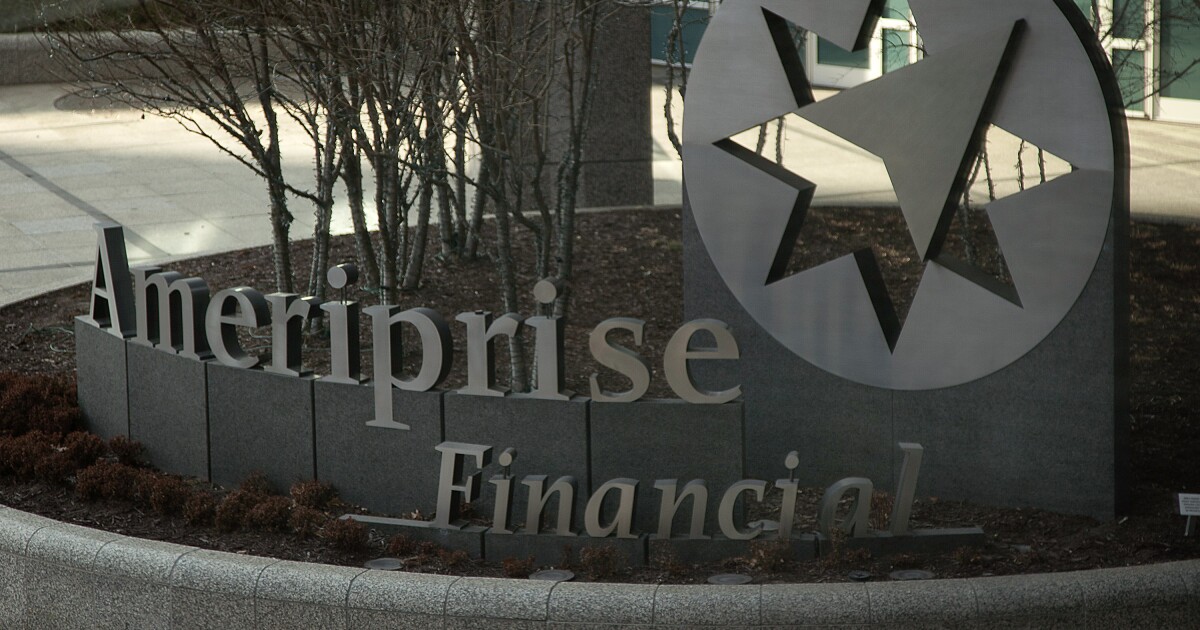If advisors who directed purchasers to place cash into Blackstone’s actual property funding belief had been doing their jobs, then the agency’s resolution to restrict withdrawals should not have come as a shock.
Blackstone, a worldwide funding agency, was all the time upfront that it would not let buyers collectively take away greater than 2% of the funds held in its actual property funding belief in a single month or 5% in a given quarter. Wealthy Kahler, the founding father of Speedy Metropolis, South Dakota-based Kahler Monetary Group, mentioned it was advisors’ job to ensure purchasers had been conscious of these limits earlier than they put their cash into the Blackstone REIT, generally referred to as BREIT.
So Blackstone’s latest announcement that it will curb withdrawals after faster-than-usual pullouts in October and November ought to have been something however surprising, mentioned Kahler.
“It actually behooves the advisor to clarify that to them getting into,” Kahler mentioned.
After buyers withdrew $1.8 billion from BREIT in October — equal to 2.7% of the $69 billion fund’s net-asset worth — Blackstone introduced in a Dec. 2 letter to shareholders that it will limit additional redemptions. Buyers then pulled $1.3 billion in November, roughly 2% of the overall fund. That left solely 0.3% for buyers to take out in December underneath the fund’s 5%-per-quarter restrict.
BREIT is of specific curiosity within the trade as a result of it’s the largest non-publicly traded REIT now supplied to U.S. buyers. Not like REITs listed on public exchanges, non-traded REITs are often bought instantly by monetary advisors. Each private and non-private REITs are sometimes touted as a way of giving buyers a method of diversifying their portfolios with all kinds of actual property, together with flats, workplace buildings and distribution facilities. BREIT is primarily invested in multi-family housing and warehouse property, a lot of it within the South.
Regardless of the outflows, BREIT has produced sturdy returns whilst publicly traded REITs have, like most exchange-traded property, tumbled in worth. BREIT’s annual returns have averaged 13% because the fund’s inception in 2017, and its year-to-date return is 9.3%. Blackstone has mentioned its withdrawal limits are designed to stop pressured gross sales of its property property.
In an announcement, the agency mentioned BREIT “was constructed on efficiency, not fund flows, and efficiency is rock stable.”
Non-traded REITs have attracted heightened consideration from regulators in recent times over complaints that they cost excessive charges, provide buyers little transparency into their holdings and stay too exhausting to get cash out of.
Blackstone’s announcement about withdrawal limits has not gone unnoticed. Invoice Beatty, the chairman of the North American Securities Directors Affiliation’s Company Finance Committee and Securities Administrator, mentioned in an emailed assertion: “We’re all the time involved when buyers who could must liquidate their holdings discover themselves unable to take action.”
NASAA — which represents state and provincial regulators within the U.S., Canada and Mexico — is contemplating a proposed assertion of coverage that, amongst different issues, would improve the online revenue and internet value thresholds used to find out who can spend money on non-traded REITS. The company at the moment recommends that buyers be barred from placing cash into non-traded REITs except they’ve each a internet revenue and internet value of not less than $70,000; or a complete internet value of not less than $250,000. NASAA, which remains to be contemplating revisions to its proposal after receiving dozens of responses throughout a public-comment interval, desires these thresholds raised to $95,000 and $340,000.
Advocates of non-traded REITs argue their trade would not want additional regulation. They are saying latest improvements, notably the introduction of a brand new sort of REIT knowns as a net-asset worth REITs, have alleviated many of those considerations. Older varieties of non-traded REITs tended to be illiquid as a result of they allowed buyers to get their cash out solely when their property holdings had been bought. The newer NAV REITs like BREIT are as an alternative valued by taking a look at assessments and comparable gross sales information and include ensures that buyers can get their cash out at set occasions of the yr.
Kahler mentioned he had steered purchasers away from non-traded REITs, primarily as a result of he thought their buyer charges had been too excessive. The Securities and Alternate Fee has warned these can vary as excessive as 15% of an funding in a fund, “which lowers the worth and return of your funding and leaves much less cash for the REIT to take a position,” though charges fluctuate from one REIT to the subsequent.
After expressing his doubts in a weblog put up, Kahler heard from representatives of JLL Earnings Property Belief, a non-traded REIT based mostly in Chicago, who invited him to research their product a bit extra quite than dismiss it outright. He spent practically three years doing due diligence earlier than concluding the JLL REIT was a stable funding. He now recommends it as a part of a portfolio of different investments to purchasers who’re wanting past shares and bonds.
The truth that the JLL REIT has risen in worth this yr — 21.6% by Sept. 30 —whereas most different investments have tanked has him “wanting like a hero,” Kahler mentioned. He mentioned he hasn’t regarded particularly into the Blackstone REIT however that he “would not doubt” there are not less than half a dozen stable non-traded REITs in existence right now. Advisors simply should be actually cautious to suss out the great bets from the dangerous ones earlier than recommending something to a shopper, he mentioned.
Others see Blackstone’s skill to fulfill the surge of withdrawal requests in October and November as a proof of the fund’s solidity. Buyers mustn’t overlook the truth that Blackstone was capable of present greater than $2 billion to buyers over the course of two months, mentioned Kevin Gannon, the chairman and CEO of the Shrewsbury, New Jersey investment-banking agency Robert A. Stanger & Co. That efficiency, mentioned Gannon — whose agency produces experiences on the efficiency of REITs — reveals non-traded REITs are not essentially the illiquid cash traps of the previous.
“To me, we needs to be applauding this,” Gannon mentioned. “They have been capable of present a monstrous stage of liquidity from one thing that is usually criticized as a non-liquid product.”
Gannon famous that Blackst, as an illustration, has agreed to promote its practically 50% stake within the MGM Grand Las Vegas and Mandalay Bay casinos for $5.5 billion, a part of which may very well be used to cowl withdrawal requests.
An investor FAQ from Blackstone notes that 70% of the withdrawals are coming from abroad, particularly from Asia. Gannon speculated that buyers who had seen their inventory and bond holdings plummet in worth over the previous yr is likely to be in search of money to shore up their portfolios.
“It is the top of the yr, and individuals are pondering, ‘I must reshuffle some issues,'” Gannon mentioned. “That is most likely what is going on on right here.”
























